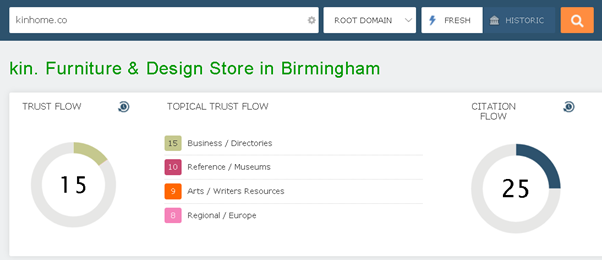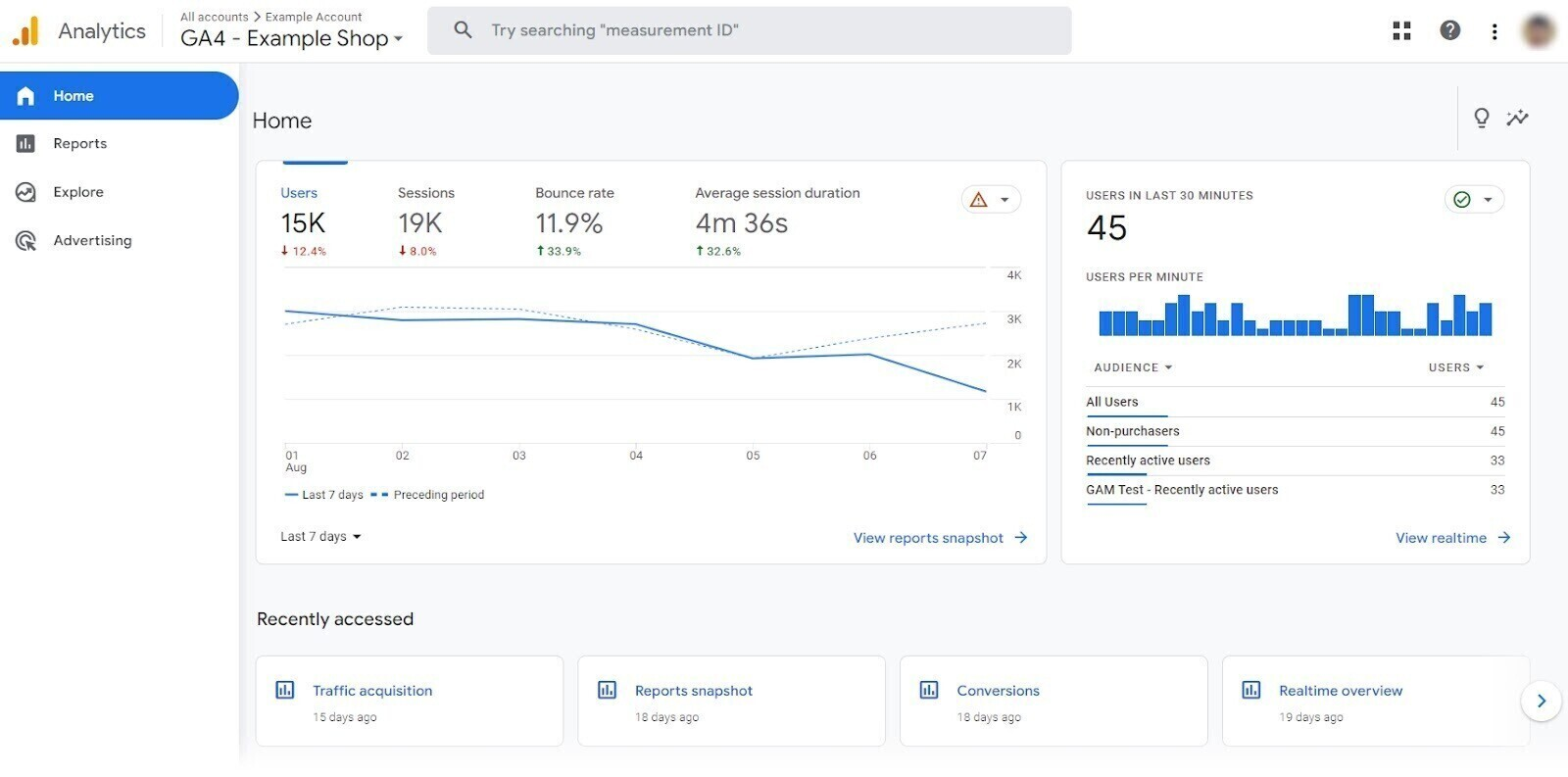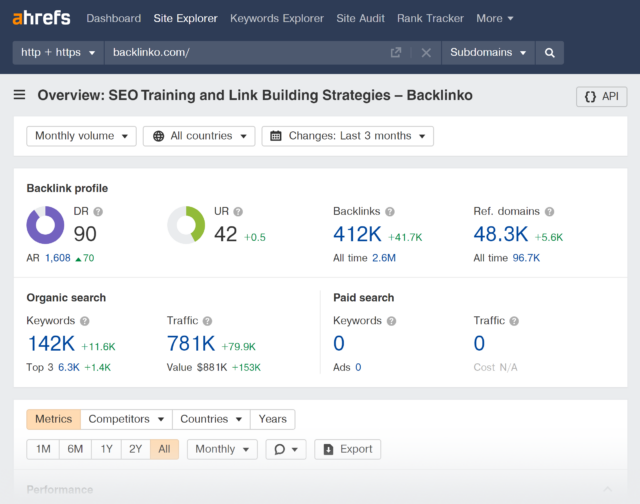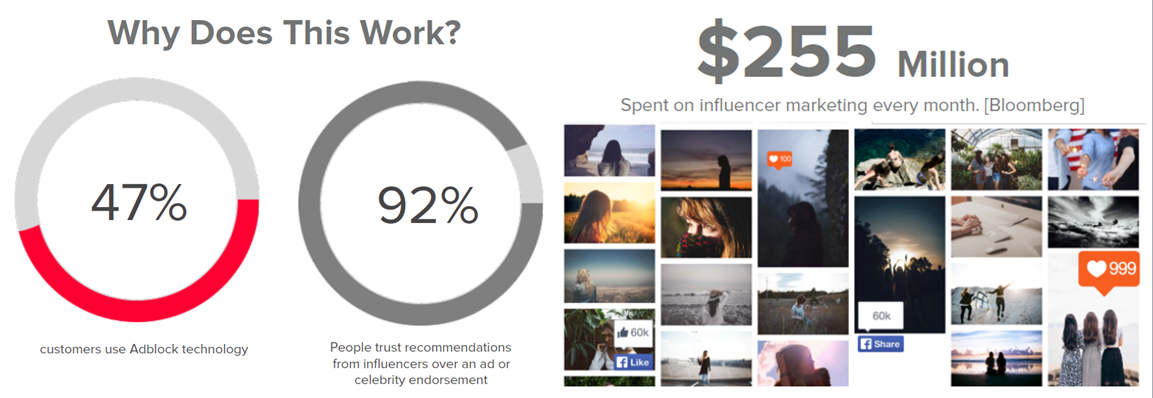Whoever coined the term “content is king” is a genius. However, one thing that isn’t much talked about is the complications that come along with it.
You can create your content any way you want. But gathering an audience through your content can turn out to be a challenging task. Since it’s 2024, businesses have already found a way to do that, too.
Link Building!
Not familiar with the term?
Link building refers to the process of getting various websites to link back to your website. It’s a great way of marketing for business owners as it helps them to drive referral traffic on their website and enhance their website’s authority.
Then again traditional methods are of no use in the present cutthroat market. That’s why it is imperative to adopt the date-driven link-building approach. This involves leveraging analytics to identify high-impact opportunities that yield great results.
To give you a brief understanding of this data-driven link-building approach, we’ll look at some significant pointers that will help you get as much traffic as possible on your website.
What is Data-driven Link Building?
Data-driven link building is leveraging data, tools, and insights to find opportunities to acquire high-quality backlinks that can increase a website’s authority and search engine results.
Here, the prior goal is to draw as many backlinks as possible from authoritative sources and offer content that is a valuable resource for journalists, bloggers, and industry professionals.
Moreover, a small number of high-quality backlinks has a far better impact than hundreds of low-quality links. According to a study conducted by Backlinko analysis found that the website that ranks highest on Google has 3.8 times more backlinks than sites that rank between 2 and 10.
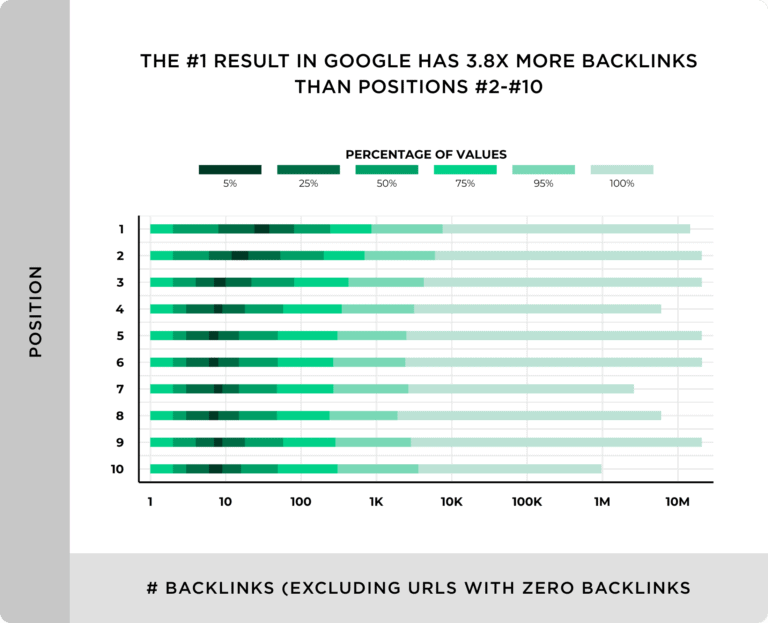
Key Metrics in Data-Driven Link Building
Understanding the critical metrics involved is crucial to putting a data-driven strategy into practice. These metrics offer insightful information on possible link sources and the significance of links obtained.
1. Domain Authority (DA) and Page Authority (PA)
In link building, two of the most used metrics are Domain Authority (DA) and Page Authority (PA). These Moz-developed ratings indicate the likelihood that a domain or page will rank well in search results. A greater probability of ranking well is indicated by higher scores.
When looking for link opportunities, pay attention to sites and domains with high PA and DA. These connections are more likely to add substantial value to your website.
2. Trust Flow and Citation Flow
Majestic’s metrics on Trust Flow and Citation Flow provide further information on the backlink profile of a website.
Citation Flow gauges the number of hyperlinks pointing to a website, whereas Trust Flow gauges their quality. A website is more likely to be a high-quality source of links if it has a low Citation Flow score and a high Trust Flow score.
According to research by Majestic, websites with a higher trust flow typically have higher Google rankings. Links that are expected to yield long-term SEO advantages might be prioritized by concentrating on websites with high Trust Flow indicators.
Blog.majestic.com/company
3. Relevance
Another critical component of data-driven link creation is relevance. Search engines give greater weight to links from websites that are topically linked to your own.
For instance, if you have a fitness blog, a backlink from a reputable fitness website will be more significant than a link from a general news page.
Find websites in your niche that address subjects related to yours by using analytics. You can look for backlinks from rivals and identify thematically relevant link opportunities with tools like Ahrefs and SEMrush.
4. Referral Traffic
Referral traffic is basically the traffic that you attract to your website through backlinks from other sites. It is not certain that every backlink will create substantial traffic, but those that do can become valuable sources of new visitors.
If you keep a check on referral traffic, you can identify which backlinks are gathering the most traffic and prioritize those for your link-building strategy.
5. Anchor Text Distribution
Anchor text distribution refers to the diversity and frequency of anchor text formats used in backlinks pointing to a website. Since anchor text affects how search engines determine the authority and relevancy of a website, its distribution is a crucial component of SEO.

One such study conducted by Ahrefs stated, using a wide range of anchor texts, is essential for preventing over-optimization.
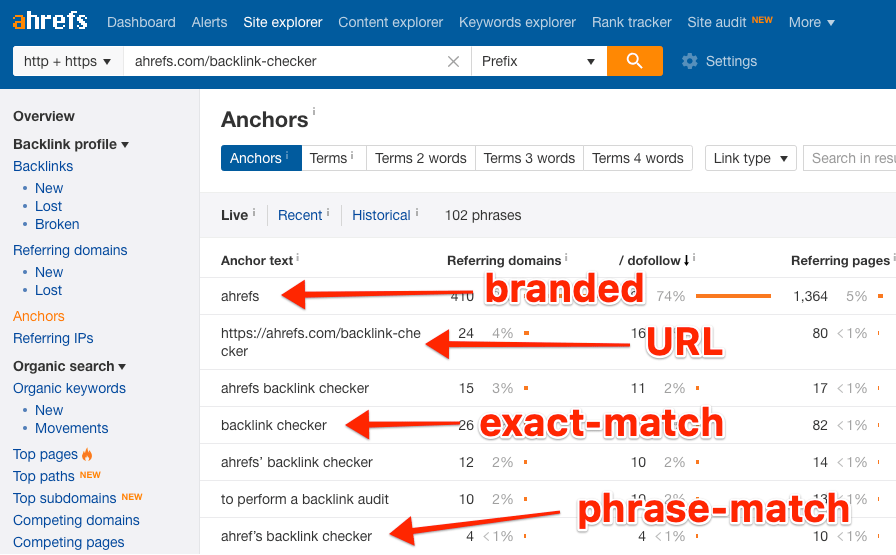
Tools for Data-Driven Link Building
Link building in today’s world entails the use of data and requires tools for proper link building. These tools are helpful for evaluating the backlinks and to determine good opportunities that can have a big impact.
1. Google Analytics
semrush.com
Google Analytics is quite helpful in tracking your referral traffic, conversions, and user activities on your website. These insights allow you to identify which of the backlinks is directing high-quality traffic to your website. It is essential for narrowing down the link building objectives as well as for developing better ways of link building.
2. Ahrefs
Ahrefs is one of the best tools for backlink research. Unlike some other tools, it provides a complete overview of your backlink profile combined with parameters such as DR and organic traffic.
You can obtain a sense of the link-building prospects by using the Ahrefs Site Explorer to check which websites connect to those of your rivals.
Therefore, websites that have higher DR scores usually receive more organic traffic as indicated by Ahrefs. Opting for the links from these sites also goes a long way to determine your position on the search engines.
3. SEMrush

SEMrush offers a rich set of tools for SEO, one of which is the backlink audit tool that points out toxic links.
It also has a link-building tool to help you manage your email outreach campaigns, find people to pitch to, and monitor their replies.
Moreover, according to a study conducted by SEMrush, you can boost your website with Google traffic if you combine link building with SEO tactics.
4. Moz Link Explorer
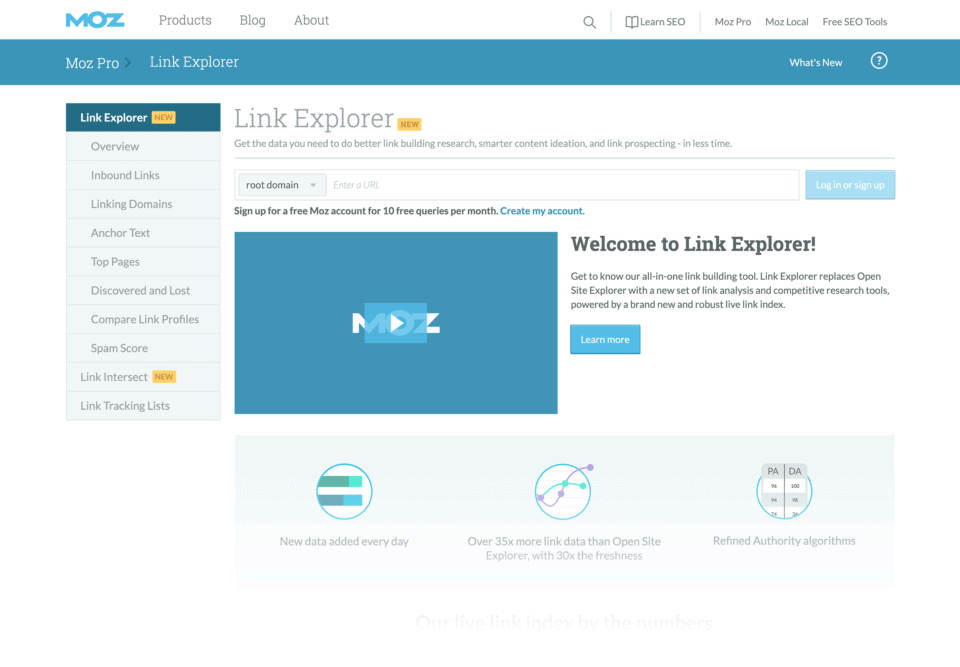
One of the other tools, which can be used for backlink analysis, is Moz Link Explorer. It offers credible statistics in terms of Domain Authority (DA), Page Authority (PA), and Spam Score. The tool has a link intersect option which indicates the linking sites that your competitors are receiving from, but you are not.
5. Majestic
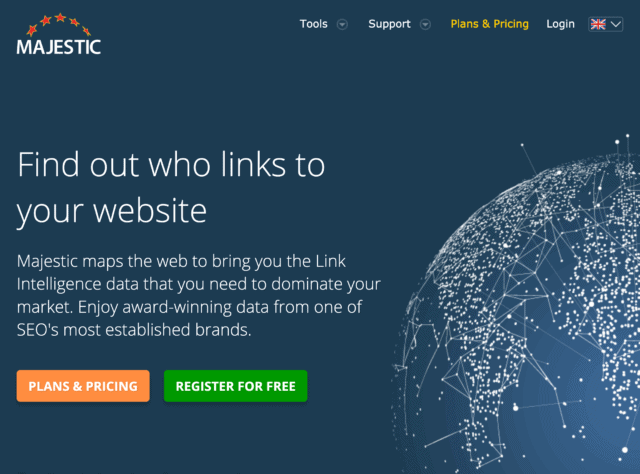
Majestic provides beneficial tools like Trust Flow and Citation Flow metrics for backlink research. Its Topical Trust Flow tool makes it simpler to locate high-quality link possibilities by assisting you in identifying websites that are pertinent to your niche.
Majestic highlights the significance of focusing on trusted domains by stating that websites with higher Trust Flow ratings typically rank higher on Google.
Strategies for Effective Data-Driven Link-building
To identify high-impact opportunities, you should make the best use of your data-driven link-building strategy. The following are some pointers to help you improve your strategy.
1. Competitor Backlink Analysis
Competitor backlink analysis is by far one of the most valuable techniques for identifying link opportunities. It helps estimate the backlinks of your competitors and find out which websites are more likely to link to content on your website.
2. Content Gap Analysis
Content gap analysis helps you determine the topics that your competitors have covered. Developing content within these gaps can lure backlinks from the sites that are linking to your competitors.
For instance, if a competitor has published an article that has received a lot of traffic, then it is wise to come up with an improved or more detailed one.
Where there is content gap analysis, there is usually access to backlinks of a higher quality that not only help to improve the SEO rating but also gain more credibility in the specified area of focus.
3. Building Relationships with Influencers
Influencer marketing should also be adopted to boost your link-building process. It brings you closer to the industry directors from whom you hope to get backlinks while promoting your site.
In fact, 92% of customers trust an influencer above advertising or a typical celebrity endorsement, according to statistics from the influencer marketing platform.
forbes.com
4. Broken Link Building
Another type of link acquisition is broken link building, where you search for dead links on other websites and offer your content to replace them. It not only assists a site owner in identifying broken links but also benefits you with some potential backlinks.
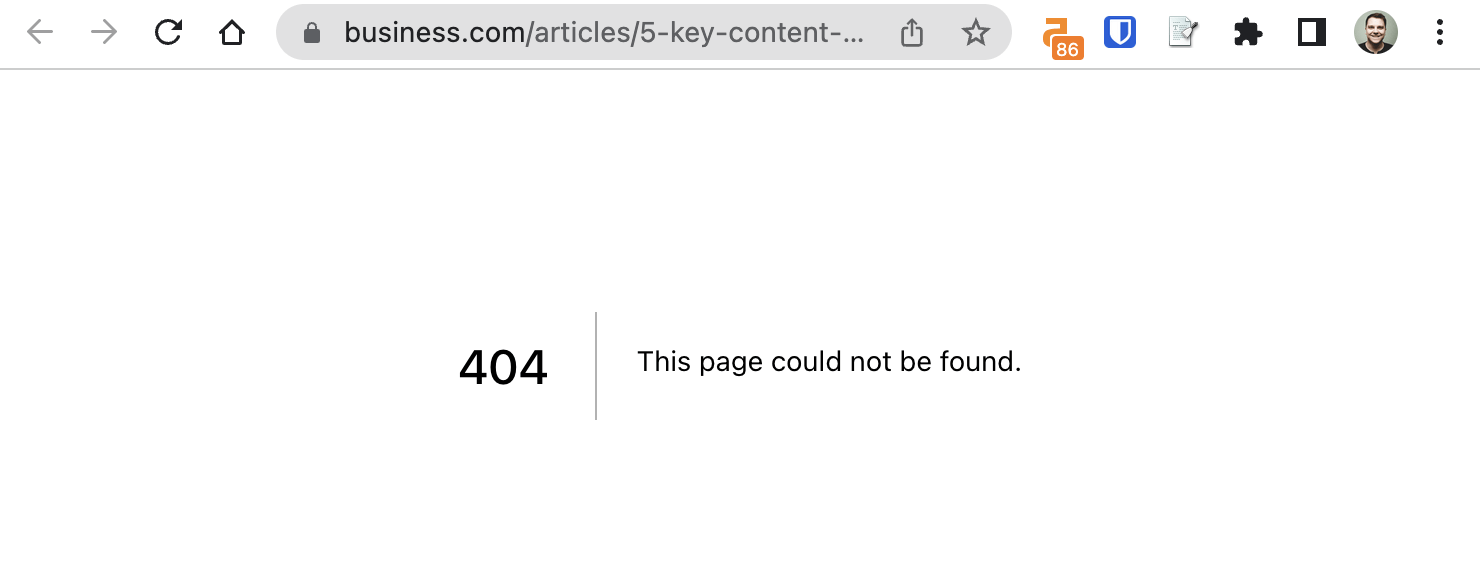
5. Unlinked Mentions
With the help of unlinked mentions, you look for chances where your brand, product, or service is advertised or mentioned but is not linked to your website.
You can approach these websites and ask to add a link. Through this strategy, you not only garner your backlinks but also increase the reputation and visibility of your brand.
6. Create Data-Driven Content
Employ data to develop fresh analysis, opinion polls, illustrations, or situations. Content with original, actionable data is more likely to receive backlinks since it provides a value that other sites want to reference.
Information formatted with statistics and tables to support a narrative or data analysis tends to generate more engagement. A study by Clearscope stated that content that covered a topic in-depth and had a high “Content Grade” performed noticeably better than less detailed content.
7. Use Surveys for Original Insights
Invest your time and money in surveys that are specific to your business and industry and provide the results in a comprehensive report.
By promoting unique insights based on first-hand data, you can receive backlinks from websites that would benefit from the data for their visitors.
Make the survey results available in a format that can be easily shared with the rest, for instance, as a document or an image.
8. Digital PR with Data Storytelling
Write press releases, blogs, and other news articles that can be derived from new statistics or emerging market patterns. Target the media, journalists, and influencers covering your industry with relevant data-driven stories.
Features such as citation of content in industry publications are generated from unique data points, thus creating high-authoritative backlinks.
9. Utilize Statistics Roundups
Write content that gathers new statistics or trends in your industry. Websites implement links that point to those web pages that contain valuable statistics because it is customary for such statistics to be used or cited.
To increase the chances of getting backlinks, make sure your statistics page is complete and up to date.
Measuring the Success of Your Link-Building Efforts
Link-building campaigns should be evaluated regularly to determine which strategies are effective and what adjustments are needed. While data-driven link building involves the procurement of backlinks, it does not stop there; it progresses to critical analysis of the following KPIs.
1. Organic Traffic
One of the key metrics you should track when it comes to link building is organic traffic. In a research analysis conducted by BrightEdge, the information derived showed that the click-through rate for Google search results, which rank highly, is 22.4%. Analyzing fluctuations in organic traffic after the acquisition of backlinks allows for understanding their effects on the site’s position.
2. Rankings
Another important factor while measuring success involves tracking the keyword rankings. The quality of backlinks can have a positive effect on different keywords being targeted by the website.
3. Conversions
In the end, how effective your link building is should be gauged by the conversions that it brings to your business. Understanding the conversion rate from referral traffic is valuable, no matter if you’re looking to grow revenue, capture new leads, or drive more newsletter signups.
4. Authority Score
Authority Score (AS) – is the metric used by SEMrush, which helps to evaluate the quality and SEO productivity of domains or web pages and is presented on a scale from 0 to 100. When calculating AS, the things that are considered are as follows.
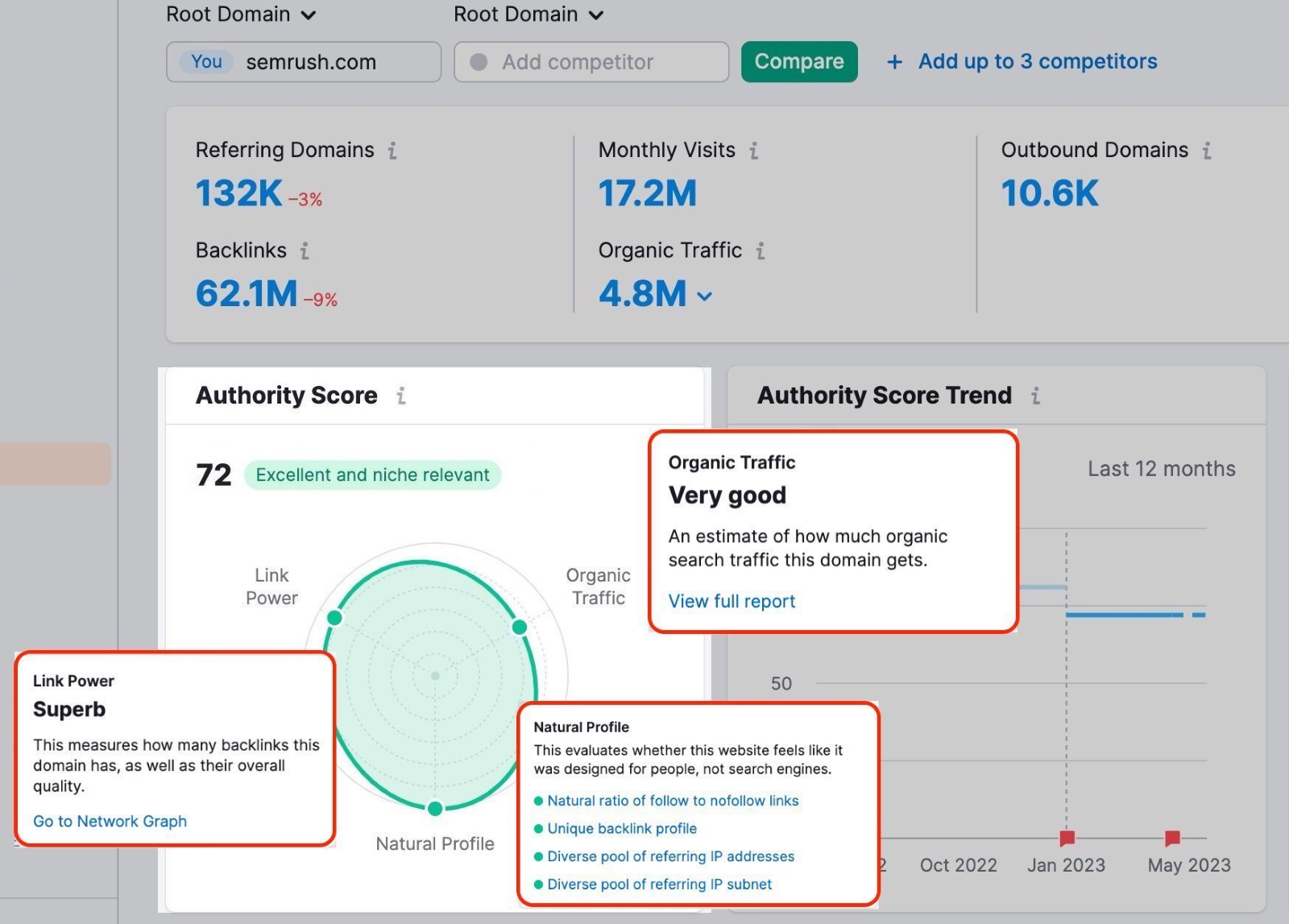
- Link Power: Total number of backlinks and the quality of the respective backlinks
- Spam Factors: Proportions of potentially spam and unnatural backlinks
- Organic Traffic: An example of what average organic traffic can be in the form of a monthly average
However, you should know that there is no set figure that will indicate a good or bad authority score. By using AS, you will be able to ensure the quality of the domains on which you want to acquire links.
Harness Data-Driven Strategies for Link-Building Success
Research and analytics are the two pinnacles of data-driven link-building strategy. By understanding what strategy or approach works best for your business, you can achieve great results.
Moreover, it is vital to stay ahead in the ever-changing digital market, which demands more smart strategies, which data-driven link development provides.
So, make sure you seize the opportunity to leverage data and allow your connections to open up new avenues for growth. Empower your strategy with data and watch your rankings soar high!

